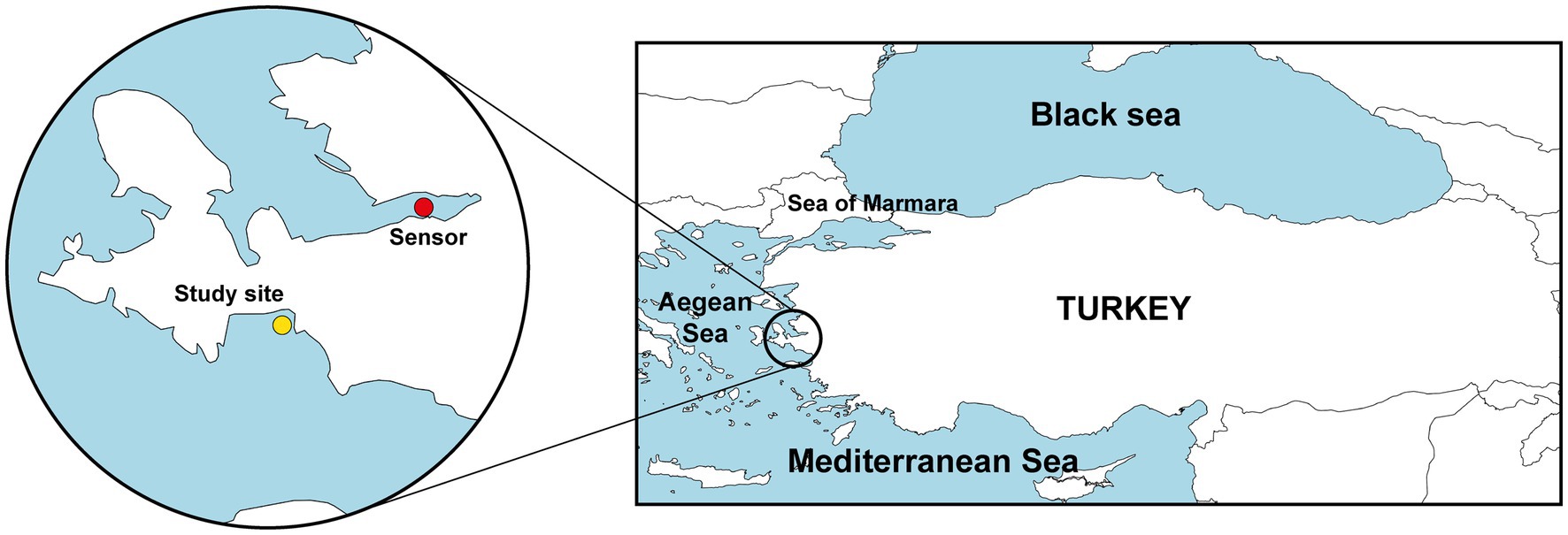Türkiye expands marine conservation with new protected areas in Aegean and Mediterranean – Türkiye Today

Report on Türkiye’s Expansion of Marine Protected Areas in the Aegean and Mediterranean Seas
Executive Summary
Türkiye has formally expanded its network of Marine Protected Areas (MPAs) as part of its national Marine Spatial Planning map, which has been registered with the Intergovernmental Oceanographic Commission (IOC) of UNESCO. This strategic initiative, developed by Ankara University’s National Maritime Law Research Center (DEHUKAM), significantly advances Türkiye’s commitment to marine conservation and the United Nations Sustainable Development Goals (SDGs), particularly SDG 14 (Life Below Water). The designation of new protected areas in the North Aegean and off the Fethiye-Kas coast underscores a national strategy to safeguard marine biodiversity, enhance climate resilience, and promote sustainable ocean governance through robust institutional frameworks and international cooperation.
Advancing SDG 14: Life Below Water Through Expanded Marine Conservation
The recent update to Türkiye’s Marine Spatial Planning map represents a direct and substantial contribution to the conservation and sustainable use of marine resources. By designating new MPAs, Türkiye is taking concrete action to meet the targets outlined in SDG 14.
- SDG Target 14.2: Sustainably manage and protect marine and coastal ecosystems to avoid significant adverse impacts, including by strengthening their resilience, and take action for their restoration.
- SDG Target 14.5: By 2020, conserve at least 10 per cent of coastal and marine areas, consistent with national and international law and based on the best available scientific information. The new MPAs are a significant step in fulfilling and exceeding this global benchmark.
Newly Designated Protected Areas
The expansion focuses on ecologically significant regions, demonstrating a targeted approach to conservation that aligns with scientific recommendations and sustainability principles. The primary objectives for these areas are the protection of marine ecosystems and the implementation of comprehensive environmental measures.
- North Aegean MPA: A new protected area has been declared off the coast of Gökçeada, a region known for its unique marine biodiversity.
- Fethiye-Kas MPA: This new designation expands upon existing conservation efforts in the Mediterranean, complementing the “Finike Submarine Mountains Special Environmental Protection Area” established in 2013.
These actions confirm Türkiye’s commitment to protecting its surrounding seas while ensuring that fundamental principles, such as freedom of navigation, are unaffected.
Strengthening Governance and Partnerships (SDG 16 & SDG 17)
To support its marine conservation objectives, Türkiye has established a robust institutional framework designed to ensure effective implementation and coordination, reflecting a commitment to SDG 16 (Peace, Justice and Strong Institutions) and SDG 17 (Partnerships for the Goals).
Marine Spatial Planning Coordination Board
A Presidential Circular officially established the “Marine Spatial Planning Coordination Board” to oversee the nation’s marine strategy. The board’s mandate includes:
- Ensuring inter-institutional coordination among relevant government bodies.
- Evaluating the environmental impacts of sectoral activities in Türkiye’s seas.
- Facilitating the sustainable development of marine resources in alignment with national and international obligations.
The Ministry of Foreign Affairs will provide secretariat services, underscoring the integration of these environmental efforts into national policy and international diplomacy. This coordinated approach involves the Ministry of Agriculture and Forestry and the Ministry of Environment, Urbanization and Climate Change, fostering a whole-of-government strategy for achieving the SDGs.
Geopolitical Context and Commitment to International Cooperation
The declaration of new MPAs is also situated within a regional context, presented as a reciprocal step following Greece’s announcement of marine parks. Türkiye has emphasized that its actions are grounded in international law and are intended to protect its legitimate rights and interests in the Aegean Sea.
Upholding International Law and Bilateral Agreements
Turkish officials have reiterated that unilateral actions will not be accepted and that its conservation measures are designed to support sustainability and environmental protection. This position is framed within the context of ongoing dialogue and cooperation, as promoted by the SDGs.
- Commitment to Dialogue: Türkiye maintains its call for cooperation with Greece on environmental matters in the semi-enclosed Aegean Sea, as encouraged by international maritime law.
- The Athens Declaration: The approach aligns with the “Athens Declaration on Friendly Relations and Good Neighborhood” signed on December 7, 2023, which promotes the resolution of issues based on international law, equity, and good neighborliness. This reinforces the principles of SDG 16 and SDG 17 by prioritizing peaceful dialogue and partnership.
By expanding its MPAs, Türkiye not only enhances its environmental stewardship but also reinforces its commitment to a rules-based international order and collaborative solutions for shared environmental challenges, contributing to regional stability and the global sustainability agenda.
Analysis of Sustainable Development Goals (SDGs) in the Article
1. Which SDGs are addressed or connected to the issues highlighted in the article?
The article on Türkiye’s expansion of Marine Protected Areas (MPAs) directly and indirectly connects to several Sustainable Development Goals. The analysis identifies the following SDGs as relevant:
- SDG 14: Life Below Water – This is the most prominent SDG, as the article’s central theme is the conservation and sustainable use of marine resources through the establishment of MPAs. The text explicitly discusses “protecting marine ecosystems,” “maritime conservation efforts,” and “sustainability.”
- SDG 16: Peace, Justice and Strong Institutions – The article highlights the creation of national institutional frameworks to manage marine resources. The establishment of the “Marine Spatial Planning Coordination Board” through a Presidential Circular is a clear example of building effective and accountable institutions to govern marine activities and ensure coordination.
- SDG 17: Partnerships for the Goals – The article mentions multiple layers of partnership. This includes national inter-institutional coordination (between ministries), collaboration with academic bodies (Ankara University’s DEHUKAM), and engagement with international organizations (registering plans with UNESCO’s IOC). It also touches upon bilateral relations and international law in the context of discussions with Greece.
2. What specific targets under those SDGs can be identified based on the article’s content?
Based on the actions and policies described in the article, the following specific SDG targets can be identified:
- Target 14.2: By 2020, sustainably manage and protect marine and coastal ecosystems to avoid significant adverse impacts, including by strengthening their resilience, and take action for their restoration in order to achieve healthy and productive oceans.
- Explanation: The article states that the designated MPAs will focus on “protecting marine ecosystems and implementing environmental measures.” The entire initiative of creating MPAs is a direct action towards managing and protecting these ecosystems.
- Target 14.5: By 2020, conserve at least 10 per cent of coastal and marine areas, consistent with national and international law and based on the best available scientific information.
- Explanation: The core subject of the article is Türkiye’s addition of “new Marine Protected Areas (MPAs)” and the expansion of its “scope of protected environmental areas in the Mediterranean.” This action directly contributes to the conservation of marine areas.
- Target 16.6: Develop effective, accountable and transparent institutions at all levels.
- Explanation: The article reports on the official establishment of the “Marine Spatial Planning Coordination Board” via a Presidential Circular. This board is designed to “ensure inter-institutional coordination” and “evaluate the environmental impacts of sectoral activities,” which is a step towards creating effective and specialized institutions for governance.
- Target 17.14: Enhance policy coherence for sustainable development.
- Explanation: The establishment of the Coordination Board is explicitly “aimed at further developing Türkiye’s Marine Spatial Planning… and ensuring inter-institutional coordination.” This demonstrates an effort to align the policies of different ministries (Foreign, Agriculture, Environment) towards the common goal of sustainable marine management.
- Target 17.16: Enhance the global partnership for sustainable development, complemented by multi-stakeholder partnerships that mobilize and share knowledge, expertise, technology and financial resources, to support the achievement of the sustainable development goals in all countries, in particular developing countries.
- Explanation: The article mentions that the marine planning update was prepared by “Ankara University’s National Maritime Law Research Center (DEHUKAM) with contributions from relevant institutions” and was “registered with UNESCO’s Intergovernmental Oceanographic Commission (IOC).” This shows a multi-stakeholder partnership involving academia, government, and international bodies.
3. Are there any indicators mentioned or implied in the article that can be used to measure progress towards the identified targets?
The article provides several concrete and implied indicators that can be used to measure progress:
- Indicator for Target 14.5 (Coverage of protected areas): The article explicitly names the new protected areas: “one in the North Aegean and another off the coast of Fethiye-Kas,” as well as mentioning the “Finike Submarine Mountains Special Environmental Protection Area.” The number and geographic expansion of these MPAs serve as a direct indicator of progress.
- Indicator for Target 14.2 (Ecosystem-based management): The implementation of “Marine Spatial Planning” is an indicator of an ecosystem-based approach. The article states this plan was announced and registered with the IOC, and the new board will “evaluate the environmental impacts of sectoral activities,” which implies a holistic management approach.
- Indicator for Target 16.6 (Institutional development): The “Presidential Circular establishing the ‘Marine Spatial Planning Coordination Board'” is a tangible indicator. The existence and regular meetings of this board would measure the development of an effective institution.
- Indicator for Target 17.14 (Policy coherence mechanisms): The “Marine Spatial Planning Coordination Board” itself serves as the indicator for a mechanism designed to enhance policy coherence among different government ministries and sectors.
- Indicator for Target 17.16 (Multi-stakeholder partnerships): The successful registration of the national marine planning map with “UNESCO’s IOC” is a clear indicator of international cooperation. The credited contributions from “Ankara University’s DEHUKAM” and “relevant institutions” are indicators of a functioning multi-stakeholder partnership.
4. Summary Table of SDGs, Targets, and Indicators
| SDGs | Targets | Indicators Identified in the Article |
|---|---|---|
| SDG 14: Life Below Water | 14.2: Sustainably manage and protect marine and coastal ecosystems. | Implementation of “Marine Spatial Planning” to evaluate environmental impacts of sectoral activities. |
| SDG 14: Life Below Water | 14.5: Conserve at least 10% of coastal and marine areas. | The declaration and expansion of new Marine Protected Areas (MPAs) in the North Aegean, off Fethiye-Kas, and the Finike Submarine Mountains. |
| SDG 16: Peace, Justice and Strong Institutions | 16.6: Develop effective, accountable and transparent institutions at all levels. | The official establishment of the “Marine Spatial Planning Coordination Board” through a Presidential Circular. |
| SDG 17: Partnerships for the Goals | 17.14: Enhance policy coherence for sustainable development. | The creation of the Coordination Board to ensure inter-institutional coordination between the Ministry of Agriculture and Forestry, Ministry of Environment, and Foreign Ministry. |
| SDG 17: Partnerships for the Goals | 17.16: Enhance the global partnership for sustainable development. | Collaboration with Ankara University’s DEHUKAM and registration of the national marine map with UNESCO’s Intergovernmental Oceanographic Commission (IOC). |
Source: turkiyetoday.com

What is Your Reaction?
 Like
0
Like
0
 Dislike
0
Dislike
0
 Love
0
Love
0
 Funny
0
Funny
0
 Angry
0
Angry
0
 Sad
0
Sad
0
 Wow
0
Wow
0












































































